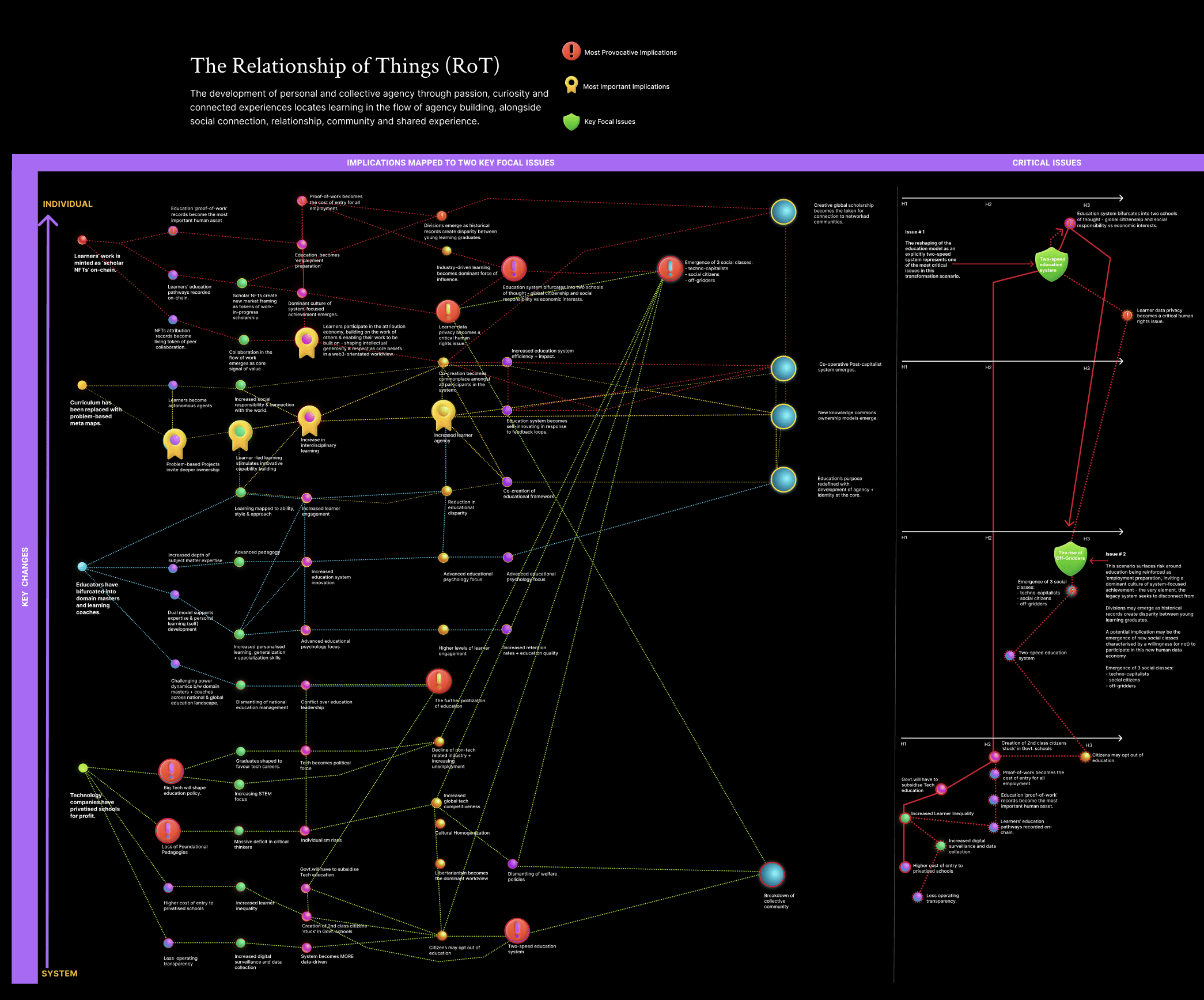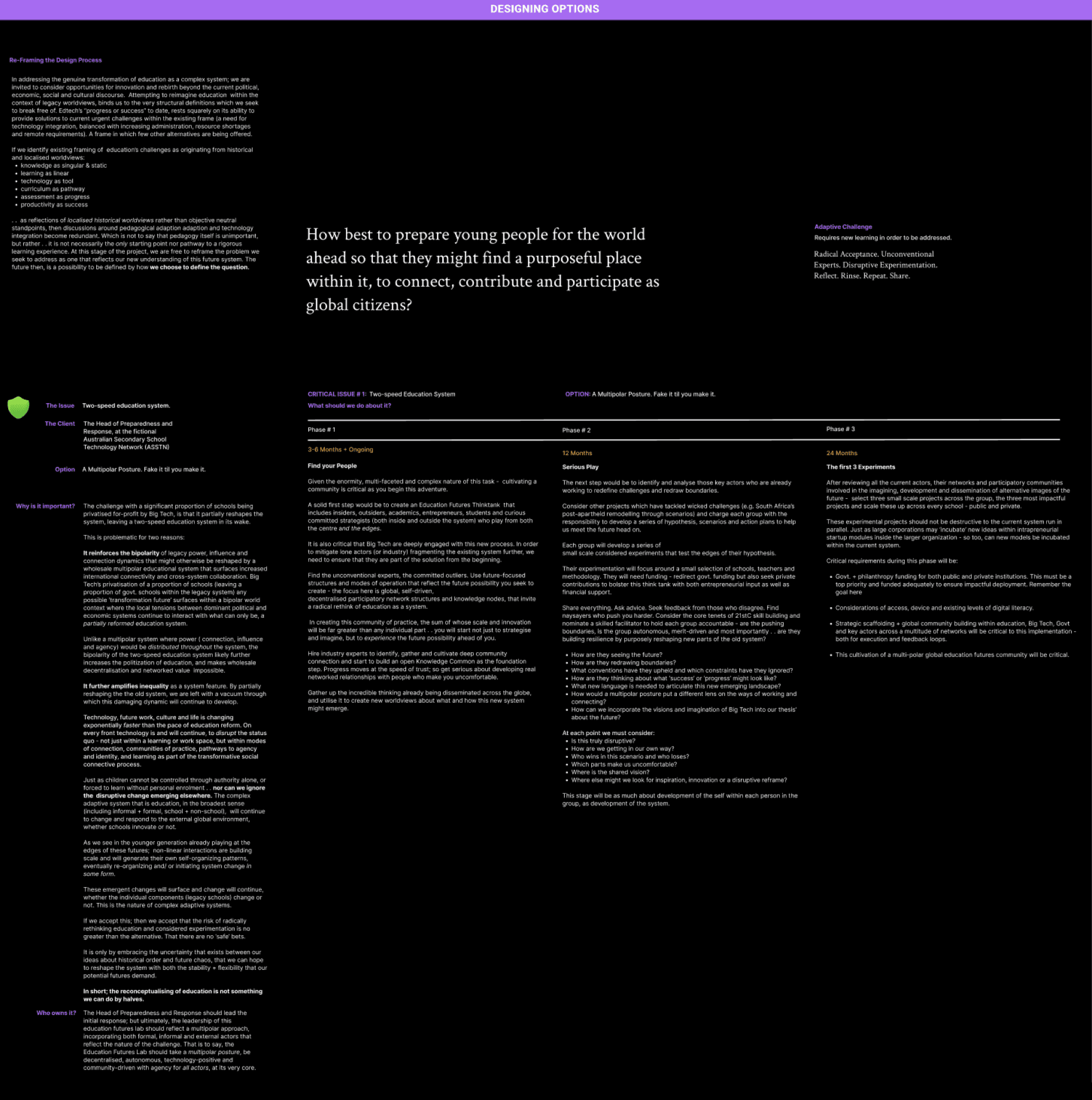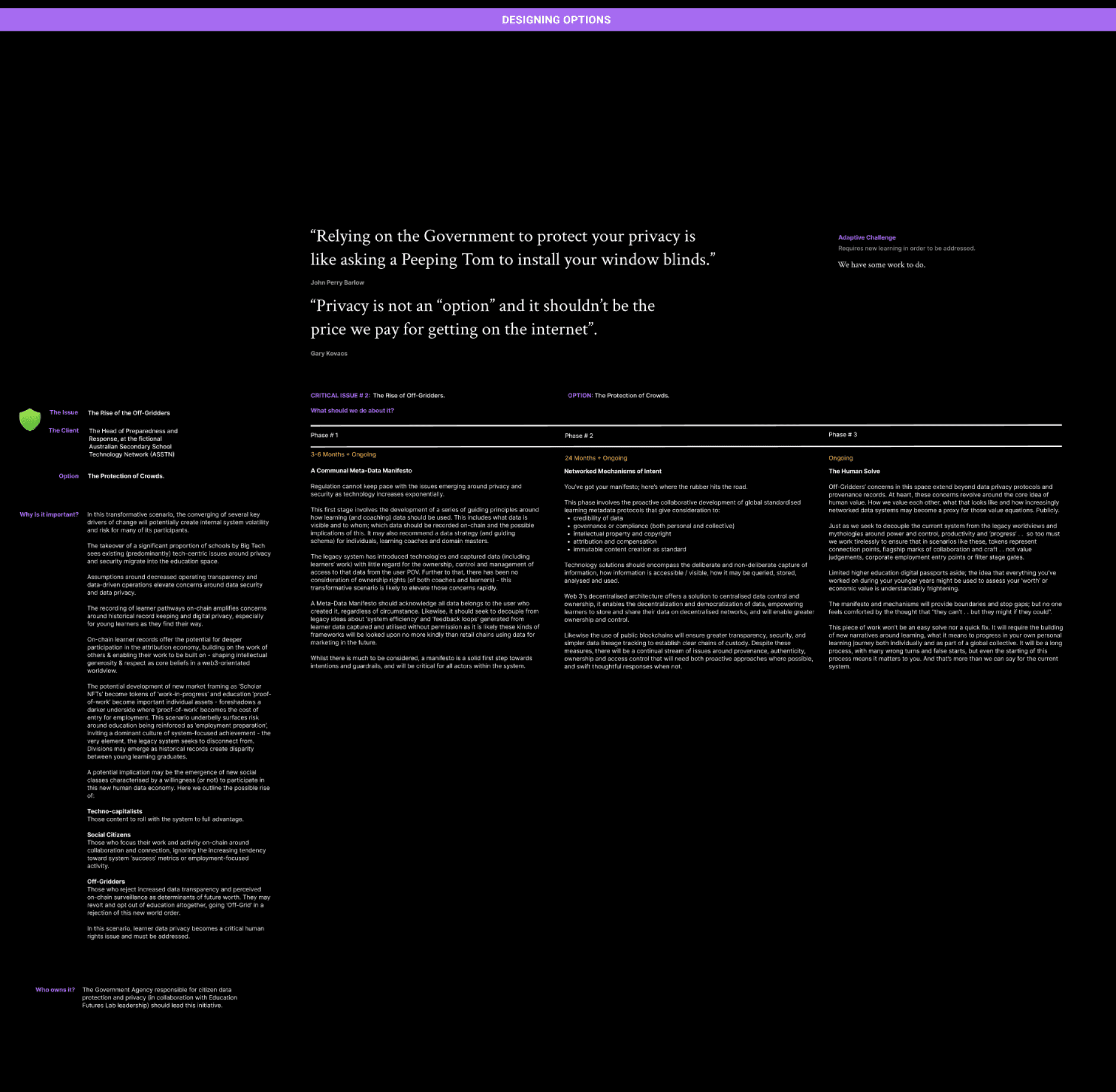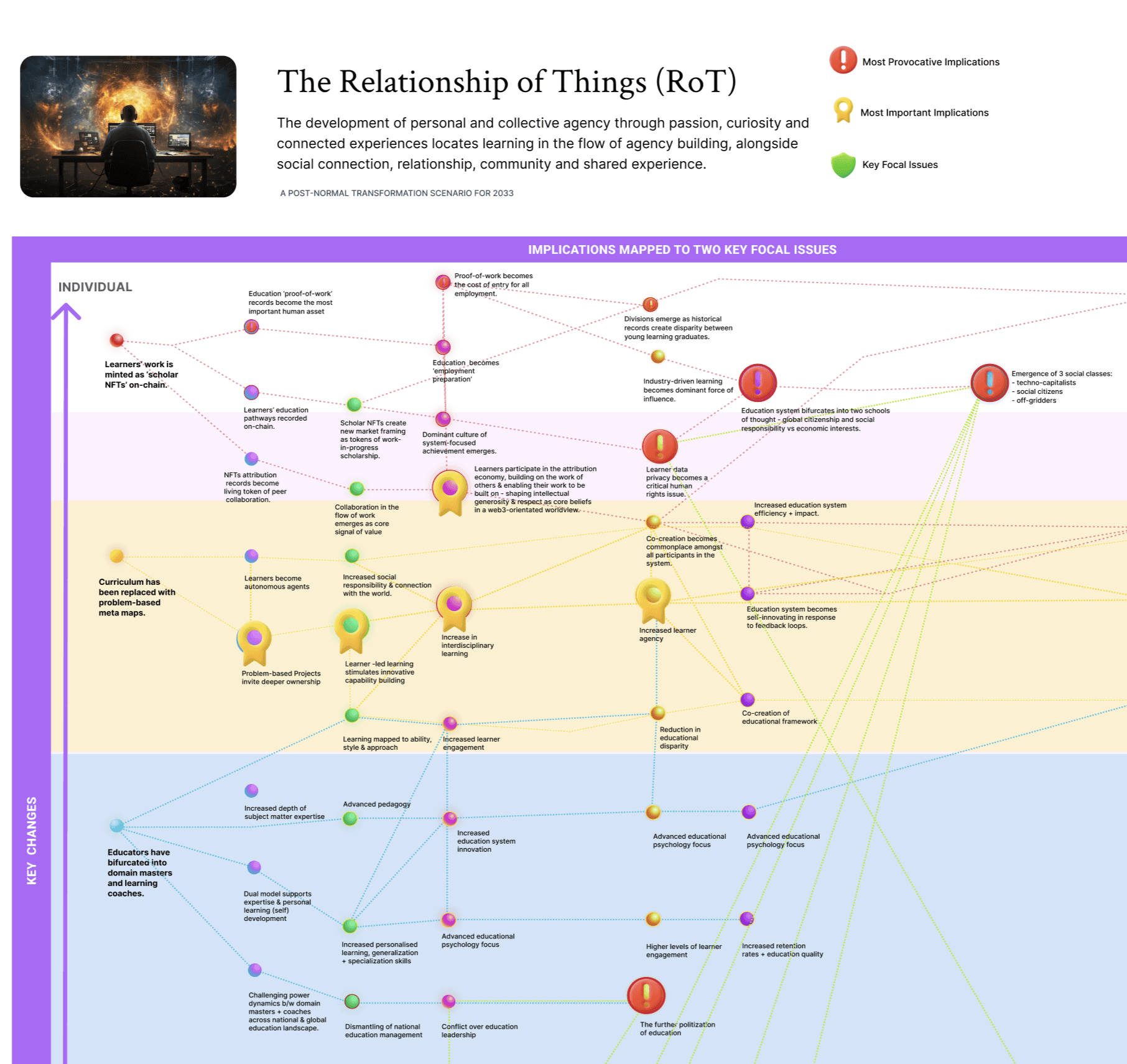Cascading Implications + Critical Focus Areas: A Pathway Map
REMEMBERING THE INITIAL FRAMING OF THE CHALLENGE
Secondary school students are preparing for a work future within a post-industrialised context where their future employment will be radically different from previous generations (and most likely, radically disconnected) from the school system within which they are being prepared. The critical question I'm exploring in this project is - what future role might pedagogical technologies play within the Australian secondary school system?
The challenge here in this project, is that at its core, it is not a strictly technological problem. It's helpful to think of the education system as a complex adaptive system, and to identify the unresolved root challenge which defines the context for this technology question. How might we reconceptualise education to prepare our students for the future?
And now we can see that technology in this context, is the proxy for a much bigger question.
It was my contention during the Current Assessment stage of this project, that exploring this question through the broader lens of education as a complex adaptive system would offer the opportunity for impactful solutions, but undoubtedly decrease the likelihood of an easy solve. 3 clicks in on Google will surface a myriad of superficial solves for the relationship between technology and education. In order to provide a rigorous and disciplined exploration of the future role of technology that is both possible and plausible; I focused on both the broader educational context and technology’s current placement within it. I did this to avoid emasculating the project challenge and further down the track, jumping to simplified scenarios which neither answer the challenge in a plausible manner, nor account for the complexity in solving it.
REFRAMING THE OPTION DESIGN PROCESS ACCORDINGLY
In addressing the genuine transformation of education as a complex system; we are invited to consider opportunities for innovation and rebirth beyond the current political, economic, social and cultural discourse. Attempting to reimagine education within the context of legacy worldviews, binds us to the very structural definitions which we seek to break free of. Edtech’s “progress or success” to date, rests squarely on its ability to provide solutions to current urgent challenges within the existing frame (a need for technology integration, balanced with increasing administration, resource shortages and remote requirements). A frame in which few other alternatives are being offered.
As we consider the most critical issues surfaced in the Transformation Scenario; it is useful to remind ourselves that the existing framing of education’s challenges originates from a historical, locally constructed wellspring within which the worldviews that frame our understanding of education include:
Knowledge as mostly singular & static
Learning as linear
Technology as tool
Curriculum as pathway
Assessment as the best measurement of progress
Improved educational productivity as success
Accepting that the beliefs above are localised historical worldviews rather than objective neutral standpoints, it follows that discussions around pedagogical adaption and technology integration become increasingly moot. Which is not to say that pedagogy itself is unimportant, but rather . . it is necessarily not the only starting point nor pathway to a rigorous learning experience.
At this stage of the project in addressing the most critical issues and potential options moving forward; it's worth remembering that my reframe of the problem I seek to address is the one that reflects our new understanding of this future system. The possible imagined futures then, represent possibilities which are defined by how we choose to define the question. That is: How might we reconceptualise education to prepare our students for the future?
2 MOST CRITICAL ISSUES + OPTIONS TO ADDRESS THEM
After working through the Future Wheels which were based on emergent ideas developed in the Transformation scenario - The Relationship of Things (RoT), I consolidated the key implications from the wheels in order to identify the two most Critical Issues this scenario presents, along with potential Options to address them. You can see the cascading implication pathways mapped around the two key critical issues of focus below.

OPTIONS
Utilising the 2 critical issues identified here, I have prepared an option for each which outlines a potential staged strategic response.



